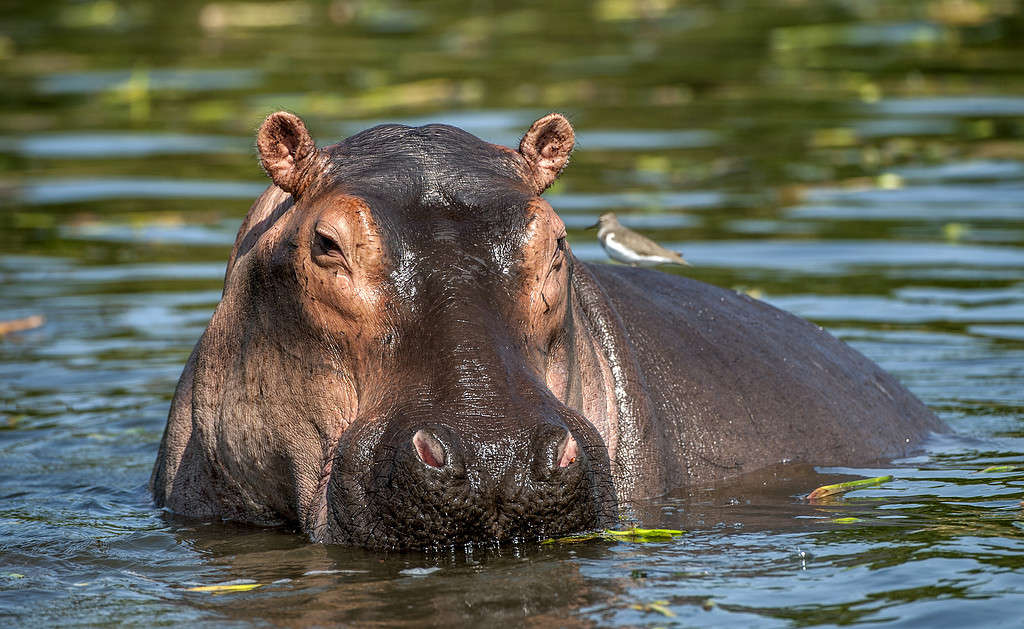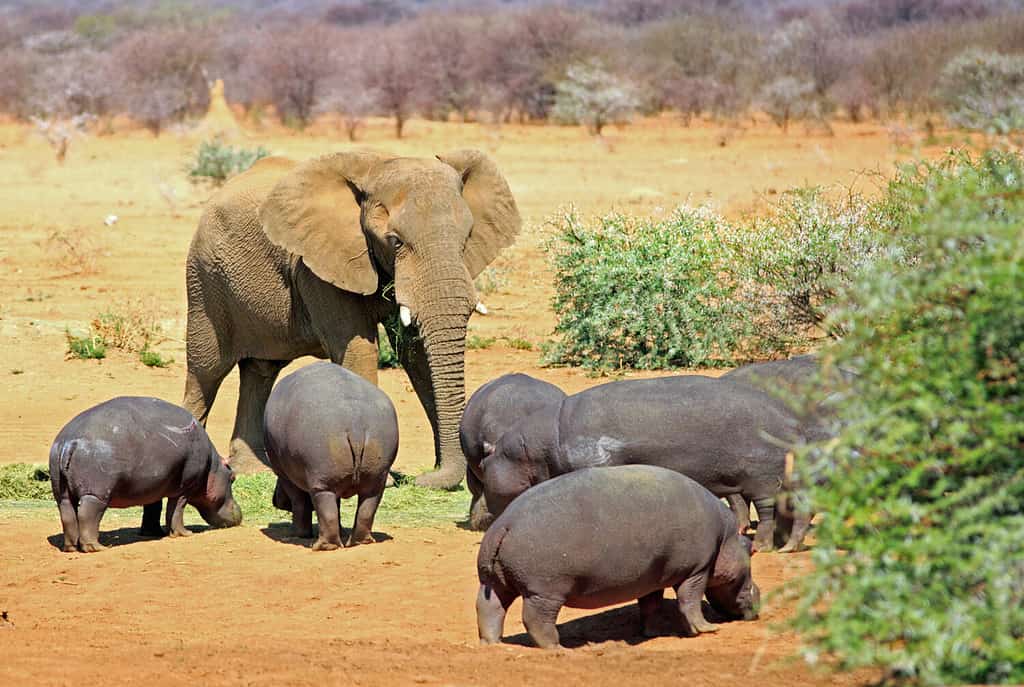Hippos are some of the most fascinating animals in Africa, known for their large bodies and powerful teeth, as well as their ability to submerge themselves in water. Although hippos are fairly widespread, did you know that their population is actually in decline? So, with this in mind, are hippos endangered? Read on as we explore the answer to this, as well as discover just how many of them are left in the world.
Where Do Hippos Live?
There are two species of hippos — common hippos (widely known simply as hippos) and pygmy hippos. Common hippos are significantly larger than pygmy hippos and are capable of reaching weights between 3,000 and 9,900 pounds. In contrast, pygmy hippos typically weigh 400 to 600 pounds. However, despite the vast size difference, both species are characterized by their barrel-shaped bodies and large heads with powerful teeth.
Both species of hippos are native to Africa, although pygmy hippos are located in the western region where they primarily inhabit forests and swamps. Common hippos live throughout the majority of sub-Saharan Africa, where they inhabit areas in and around lakes and rivers.
Hippos are primarily herbivores and eat a variety of grass and plants. They are most active during the night when they leave the water to graze. However, during the day they can be found submerged in the water or close by on the shore. They spend their day in the water so that they can protect their skin from the red hot sun.
How Many Hippos Are There in the World?

The populations of both species of hippos are declining.
©iStock.com/Sergei Uriadnikov
Both species of hippos are considered to be endangered today. The common hippopotamus is classified as a Vulnerable species, while pygmy hippos are officially classified as Endangered.
There are currently approximately 115,000 to 135,000 hippos in the world today. Although this may seem as though they are in a fairly strong position, the population is actually decreasing. However, the population of the common hippopotamus is much greater than the population of the pygmy hippopotamus. Check out the chart below for a quick breakdown of the figures.
| Species | Population Size |
|---|---|
| Common Hippopotamus | 115,000 to 130,000 |
| Pygmy Hippopotamus | 2,000 to 2,500 |
What Threats Do Hippos Face?
Unfortunately, hippos are threatened in several ways, and these factors all contribute to their declining population. Threats include habitat loss, poaching, conflict with humans, and a low reproductive rate. Let’s explore them in more detail.
Habitat Loss
One of the main threats to hippos is habitat loss. Expanding human settlements and farmland take over areas that were formerly used by hippos and removes their supply of food. Deforestation also plays a part, especially for pygmy hippos, as their habitats are destroyed and they are pushed either into smaller areas or into relocating entirely. The expansion of farms, urban areas, and roads also risks changing or affecting the wetlands and waterways that are used by the hippos.
Poaching

Hippo teeth are made from ivory, making them a target for poachers.
©Nick Greaves/Shutterstock.com
Hippos also face a serious threat in the form of poaching. As well as being hunted for their meat and other body parts, hippos are often targeted for their teeth. Although we more commonly associate the ivory trade with elephants and rhinos, the teeth of hippos are actually made from ivory too. A hippo’s teeth can reach 1.5 feet long, making them highly sought after by poachers.
Human-Hippo Conflict
One of the other issues that hippos face today is conflict with humans. As human populations continue to increase, communities are frequently encroaching on the habitat of hippos. This puts humans and hippos in much closer proximity and increases the risk of hippos wandering closer to villages or other settlements where they are typically shot. Hippos can be extremely territorial and can react aggressively when humans enter their vicinity. Approximately 500 people are killed by hippos every year.
Furthermore, as human settlements expand into their habitat, hippos may sometimes wander onto farmland to graze on the crops. As a result, the hippos are often shot in retaliation for the damage that they cause.
Low Reproductive Rate

Hippos have a low reproductive rate, having only one calf every two years.
©paula french/Shutterstock.com
Another threat to the survival of hippos is their low reproductive rate. Hippos only give birth once every two years, typically to just one calf. This slow rate of reproduction contributes to the declining population as they’re unable to reproduce quickly enough to counteract the other threats that they are already facing.
Conservation Efforts
There are several conservation efforts underway to protect hippos and prevent their population from declining even more. These efforts include working with the local communities to prevent hippos from accessing farms and villages and therefore reducing the risk of conflict with them. Solutions include erecting fences and digging ditches, both of which prevent hippos from crossing into human areas.
Other conservation work includes creating more protected areas for the hippos, such as national parks and protected areas of waterways. Also, organizations are regularly working with governments and local officials to try to prevent poaching, arrest those responsible, and stop the trade of hippo teeth.
The photo featured at the top of this post is © 1001slide/iStock via Getty Images
Thank you for reading! Have some feedback for us? Contact the AZ Animals editorial team.






